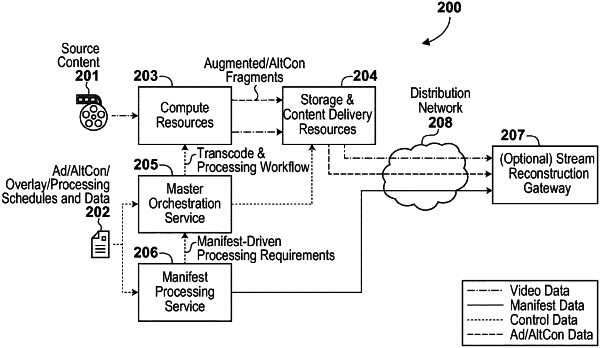| CPC H04N 21/8456 (2013.01) [H04L 65/70 (2022.05); H04L 65/764 (2022.05); H04N 21/2343 (2013.01); H04N 21/2405 (2013.01); H04N 21/26258 (2013.01); H04N 21/458 (2013.01); H04N 21/4882 (2013.01)] | 18 Claims |

|
1. A computer-process-implemented method for producing video content, the method comprising:
receiving video processing requirements for the video content, the video processing requirements including processing requirements for generation of at least one augmented video fragment by insertion of overlay content into at least one source video fragment;
receiving the overlay content;
receiving a plurality of source video fragments of the video content, each source video fragment being a separately managed unit of content, the source video fragments comprising a plurality of video fragments, each video fragment having a respective timing reference based on a timing model, where each timing reference indicates a temporal boundary of processing for the video fragment;
generating the at least one augmented video fragment by insertion of the overlay content into at least one of the source video fragments in accordance with the received video processing requirements;
aligning the plurality of video fragments with the timing model;
generating at least one master manifest, the at least one master manifest comprising the timing references for the video fragments, the overlay content, and the video processing requirements;
storing the master manifest in a non-transitory data store; and
processing the one or more video fragments based on the master manifest.
|